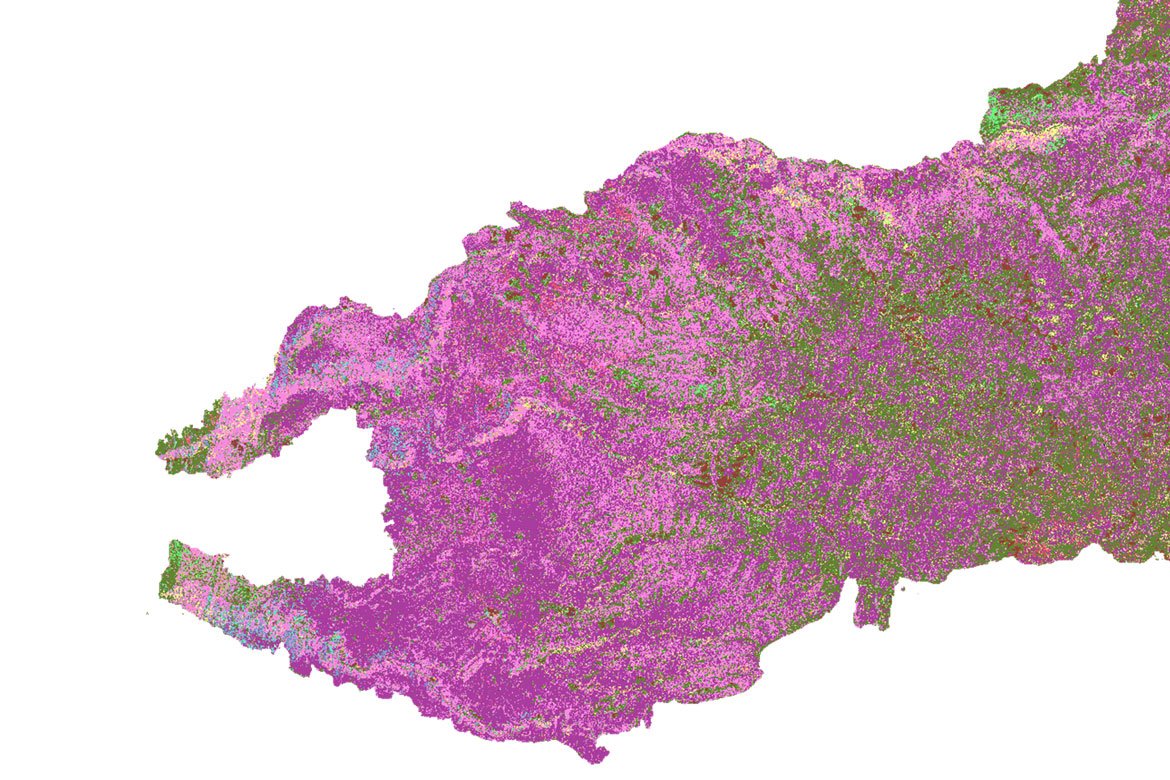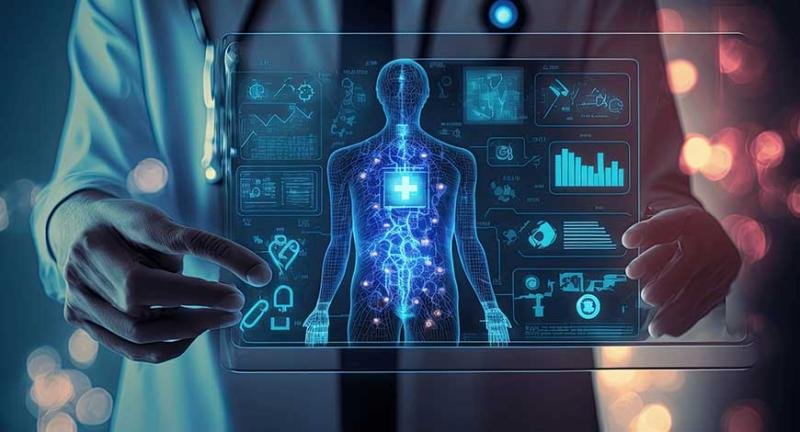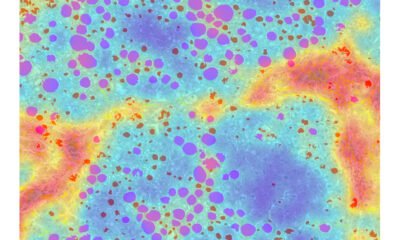AI Research
UCLA researchers unveil AI-powered tool for near real-time, large-scale wildfire fuel mapping

Key takeaways:
- In validation tests using data from two of California’s most intense recent wildfires — the Dixie and Caldor fires of 2021 — FuelVision’s predictions closely matched actual fuel maps.
- FuelVision operates autonomously, utilizing commonly available data.
- Because it draws data from global satellite inputs, FuelVision is readily adaptable to forested areas nationwide.
Researchers from the UCLA Samueli School of Engineering and their collaborators have developed FuelVision, a new system that could help enhance nationwide wildfire preparedness by combining satellite imagery with artificial intelligence to rapidly and accurately identify wildfire fuel sources.
In validation tests using data from two of California’s most intense recent wildfires — the Dixie and Caldor fires of 2021 — FuelVision’s predictions closely matched actual fuel maps, demonstrating the tool’s potential for real-world use. The system achieved 77% mapping accuracy in the tests. A study describing the new system was recently published in the International Journal of Applied Earth Observation and Geoinformation.
“We’ve built a tool that lets anyone — from local agencies to global researchers — generate wildfire fuel maps using satellite data,” said Riyaaz Shaik, lead author of the study and a research scientist at UCLA. “That helps make vital wildfire risk information accessible for faster, smarter response.”
Although some models have achieved higher accuracy on large scales, they are slower and rely on expert analysis. In contrast, FuelVision operates autonomously, utilizing commonly available data.
Because it draws data from global satellite inputs, FuelVision is readily adaptable to forested areas nationwide. The system does not require ground surveys to support fire-mitigation strategies or guide emergency responses.
Riyaaz Shaik/UCLA
Fuels map of the 2021 Caldor Fire, as predicted by FuelVision
To test and validate their model, the researchers trained the system using real data from the Forest Inventory and Analysis program of the U.S. Forest Service. The team also utilized generative adversarial networks, a type of machine learning that uses a generator to create data and a discriminator that evaluates the data’s accuracy, to produce reliable synthetic training data and help improve the system’s mapping accuracy.
“FuelVision can help anticipate where fires might spread and how to prepare,” said Ertugrul Taciroglu, study corresponding author and a professor of civil and environmental engineering at UCLA Samueli. “It’s versatile, easily adaptable and can help agencies globally with both organizing emergency response and developing long-term risk assessment and fire mitigation strategies.”
The researchers are making FuelVision accessible in two ways. They plan to release a Python-based interface that allows users with basic coding experience to generate their own fuel maps. They will also offer on-demand fuel-map production based on user needs.
The paper’s other authors are Mohamad Alipour of the University of Illinois Urbana-Champaign, a former postdoctoral researcher at UCLA; Eric Rowell, a specialist affiliated with the California Air Resources Board; Bharathan Balaji, a senior applied scientist at Amazon; and Adam Watts of the United States Forest Service Pacific Wildland Fire Sciences Lab.
The study was funded by the National Science Foundation, Edison International and the Science Hub for Humanity and Artificial Intelligence, which is a collaboration between UCLA Samueli and Amazon.
AI Research
Artificial Intelligence Cheating | Nation

We recognize you are attempting to access this website from a country belonging to the European Economic Area (EEA) including the EU which
enforces the General Data Protection Regulation (GDPR) and therefore access cannot be granted at this time.
For any issues, call 435-752-2121.
AI Research
Artificial Intelligence in Healthcare Market : A Study of

Global Artificial Intelligence in Healthcare Market size was valued at USD 27.07 Bn in 2024 and is expected to reach USD 347.28 Bn by 2032, at a CAGR of 37.57%
Artificial Intelligence (AI) in healthcare is reshaping the industry by enabling faster diagnosis, personalized treatment, and enhanced operational efficiency. AI-driven tools such as predictive analytics, natural language processing, and medical imaging analysis are empowering physicians with deeper insights and decision support, reducing human error and improving patient outcomes. Moreover, AI is revolutionizing drug discovery, clinical trial optimization, and remote patient monitoring, making healthcare more proactive and accessible in both developed and emerging markets.
The adoption of AI in healthcare is also being accelerated by the rising demand for telemedicine, wearable health devices, and real-time data-driven solutions. From virtual health assistants to robotic surgery, AI is driving innovation across patient care and hospital management. However, challenges such as data privacy, ethical considerations, and regulatory frameworks remain crucial in ensuring responsible deployment. As AI continues to integrate with IoT, cloud, and big data platforms, it is set to create a connected healthcare ecosystem that prioritizes precision medicine and patient-centric solutions.
Get a sample of the report https://www.maximizemarketresearch.com/request-sample/21261/
Major companies profiled in the market report include
BP Target Neutral . JPMorgan Chase & Co. . Gold Standard Carbon Clear . South Pole Group . 3Degrees . Shell. EcoAct.
Research objectives:
The latest research report has been formulated using industry-verified data. It provides a detailed understanding of the leading manufacturers and suppliers engaged in this market, their pricing analysis, product offerings, gross revenue, sales network & distribution channels, profit margins, and financial standing. The report’s insightful data is intended to enlighten the readers interested in this business sector about the lucrative growth opportunities in the Artificial Intelligence in Healthcare market.
Get access to the full description of the report @ https://www.maximizemarketresearch.com/market-report/global-artificial-intelligence-ai-healthcare-market/21261/
It has segmented the global Artificial Intelligence in Healthcare market
by Offering
Hardware
Software
Services
by Technology
Machine Learning
Natural Language Processing
Context-Aware Computing
Computer Vision
Key Objectives of the Global Artificial Intelligence in Healthcare Market Report:
The report conducts a comparative assessment of the leading market players participating in the globalArtificial Intelligence in Healthcare
The report marks the notable developments that have recently taken place in the Artificial Intelligence in Healthcare industry
It details on the strategic initiatives undertaken by the market competitors for business expansion.
It closely examines the micro- and macro-economic growth indicators, as well as the essential elements of theArtificial Intelligence in Healthcaremarket value chain.
The repot further jots down the major growth prospects for the emerging market players in the leading regions of the market
Explore More Related Report @
Engineering, Procurement, and Construction Management (EPCM) Market https://www.maximizemarketresearch.com/market-report/engineering-procurement-and-construction-management-epcm-market/73131/
Global Turbomolecular Pumps Market
https://www.maximizemarketresearch.com/market-report/global-turbomolecular-pumps-market/20730/
Contact Maximize Market Research:
3rd Floor, Navale IT Park, Phase 2
Pune Bangalore Highway, Narhe,
Pune, Maharashtra 411041, India
sales@maximizemarketresearch.com
+91 96071 95908, +91 9607365656
About Maximize Market Research:
Maximize Market Research is a multifaceted market research and consulting company with professionals from several industries. Some of the industries we cover include medical devices, pharmaceutical manufacturers, science and engineering, electronic components, industrial equipment, technology and communication, cars and automobiles, chemical products and substances, general merchandise, beverages, personal care, and automated systems. To mention a few, we provide market-verified industry estimations, technical trend analysis, crucial market research, strategic advice, competition analysis, production and demand analysis, and client impact studies
This release was published on openPR.
AI Research
A Unified Model for Robot Interaction, Reasoning and Planning

View a PDF of the paper titled Robix: A Unified Model for Robot Interaction, Reasoning and Planning, by Huang Fang and 8 other authors
Abstract:We introduce Robix, a unified model that integrates robot reasoning, task planning, and natural language interaction within a single vision-language architecture. Acting as the high-level cognitive layer in a hierarchical robot system, Robix dynamically generates atomic commands for the low-level controller and verbal responses for human interaction, enabling robots to follow complex instructions, plan long-horizon tasks, and interact naturally with human within an end-to-end framework. Robix further introduces novel capabilities such as proactive dialogue, real-time interruption handling, and context-aware commonsense reasoning during task execution. At its core, Robix leverages chain-of-thought reasoning and adopts a three-stage training strategy: (1) continued pretraining to enhance foundational embodied reasoning abilities including 3D spatial understanding, visual grounding, and task-centric reasoning; (2) supervised finetuning to model human-robot interaction and task planning as a unified reasoning-action sequence; and (3) reinforcement learning to improve reasoning-action consistency and long-horizon task coherence. Extensive experiments demonstrate that Robix outperforms both open-source and commercial baselines (e.g., GPT-4o and Gemini 2.5 Pro) in interactive task execution, demonstrating strong generalization across diverse instruction types (e.g., open-ended, multi-stage, constrained, invalid, and interrupted) and various user-involved tasks such as table bussing, grocery shopping, and dietary filtering.
Submission history
From: Wei Li [view email]
[v1]
Mon, 1 Sep 2025 03:53:47 UTC (29,592 KB)
[v2]
Thu, 11 Sep 2025 12:40:54 UTC (29,592 KB)
-

 Business2 weeks ago
Business2 weeks agoThe Guardian view on Trump and the Fed: independence is no substitute for accountability | Editorial
-
Tools & Platforms1 month ago
Building Trust in Military AI Starts with Opening the Black Box – War on the Rocks
-

 Ethics & Policy2 months ago
Ethics & Policy2 months agoSDAIA Supports Saudi Arabia’s Leadership in Shaping Global AI Ethics, Policy, and Research – وكالة الأنباء السعودية
-

 Events & Conferences4 months ago
Events & Conferences4 months agoJourney to 1000 models: Scaling Instagram’s recommendation system
-

 Jobs & Careers2 months ago
Jobs & Careers2 months agoMumbai-based Perplexity Alternative Has 60k+ Users Without Funding
-

 Podcasts & Talks2 months ago
Podcasts & Talks2 months agoHappy 4th of July! 🎆 Made with Veo 3 in Gemini
-

 Education2 months ago
Education2 months agoMacron says UK and France have duty to tackle illegal migration ‘with humanity, solidarity and firmness’ – UK politics live | Politics
-

 Education2 months ago
Education2 months agoVEX Robotics launches AI-powered classroom robotics system
-

 Funding & Business2 months ago
Funding & Business2 months agoKayak and Expedia race to build AI travel agents that turn social posts into itineraries
-

 Podcasts & Talks2 months ago
Podcasts & Talks2 months agoOpenAI 🤝 @teamganassi





















